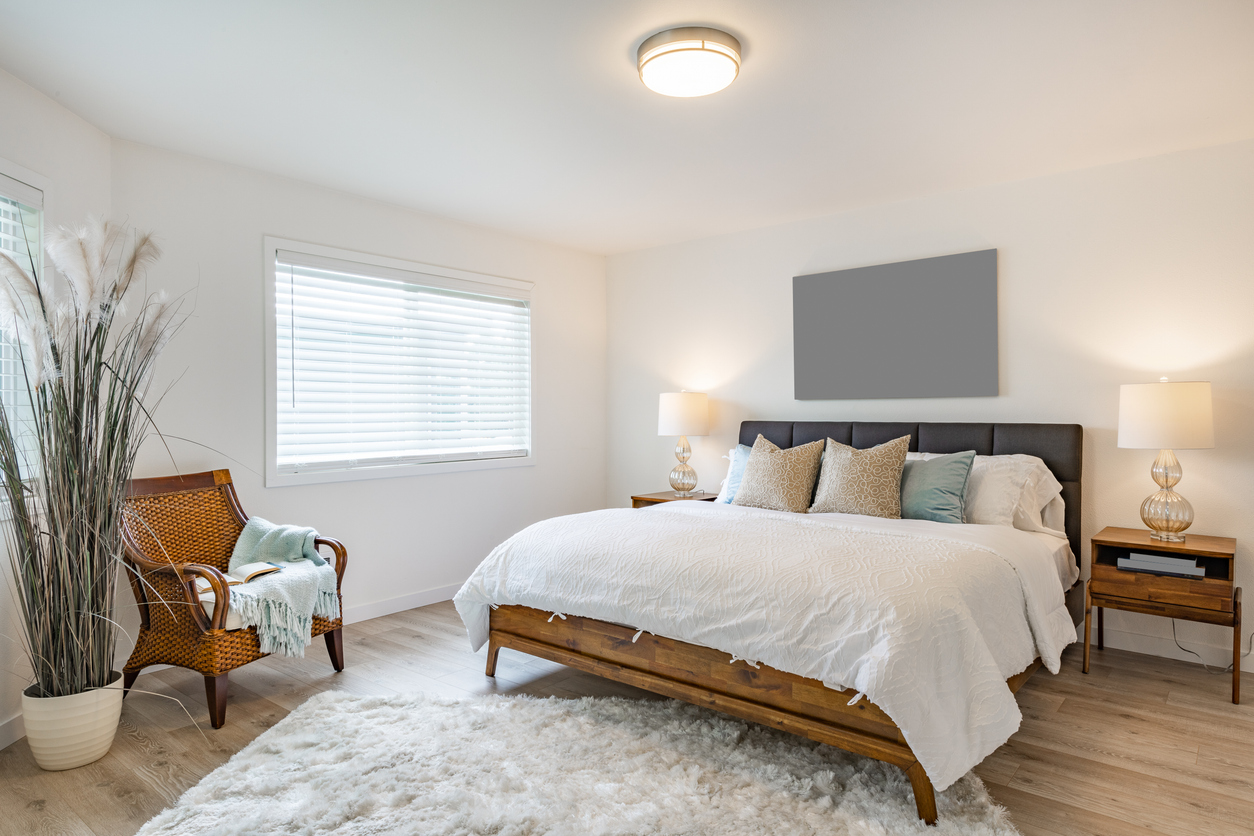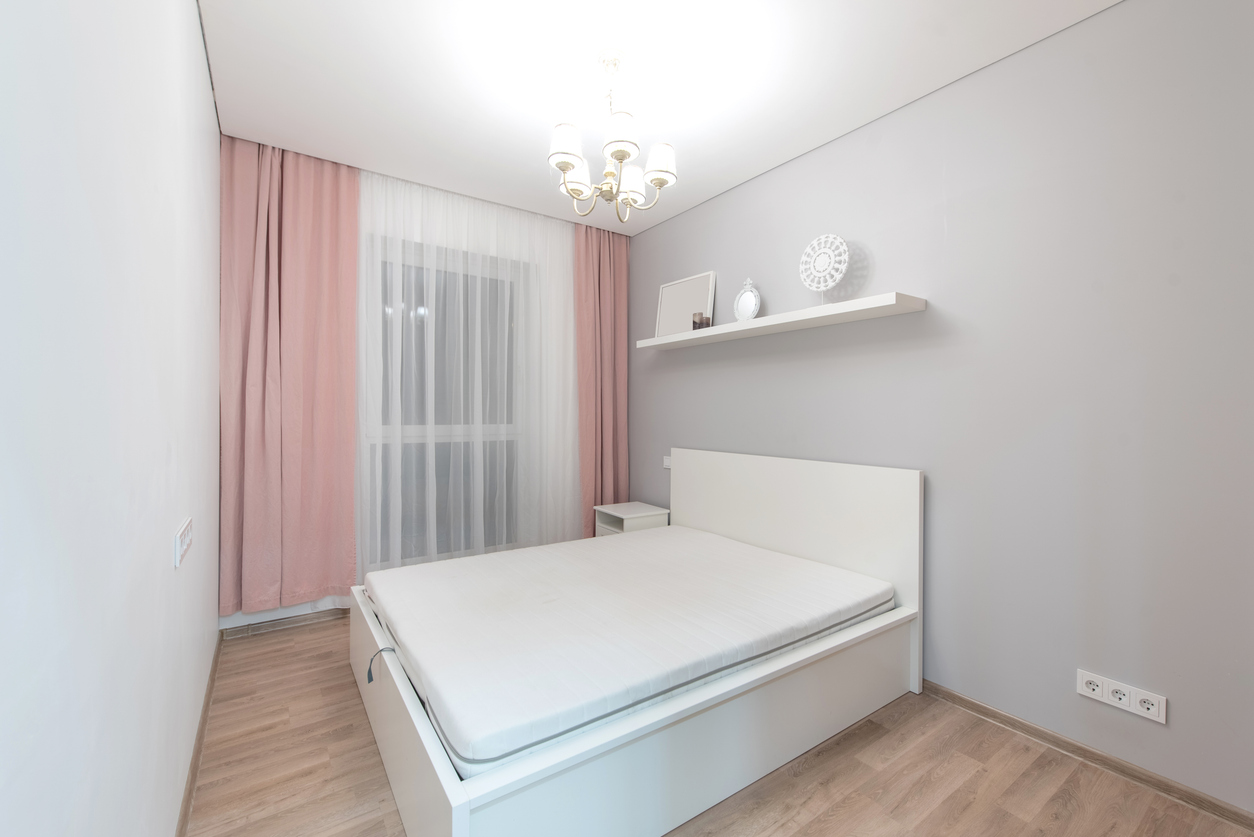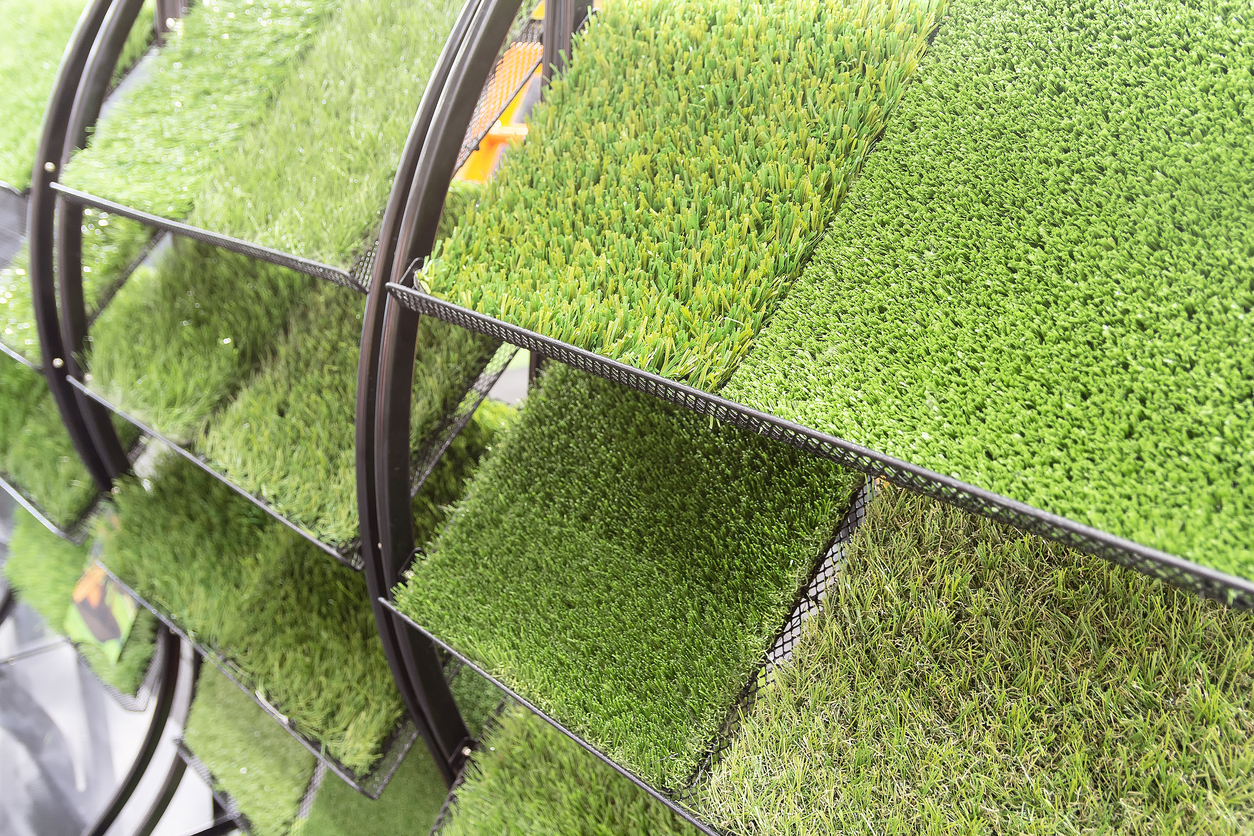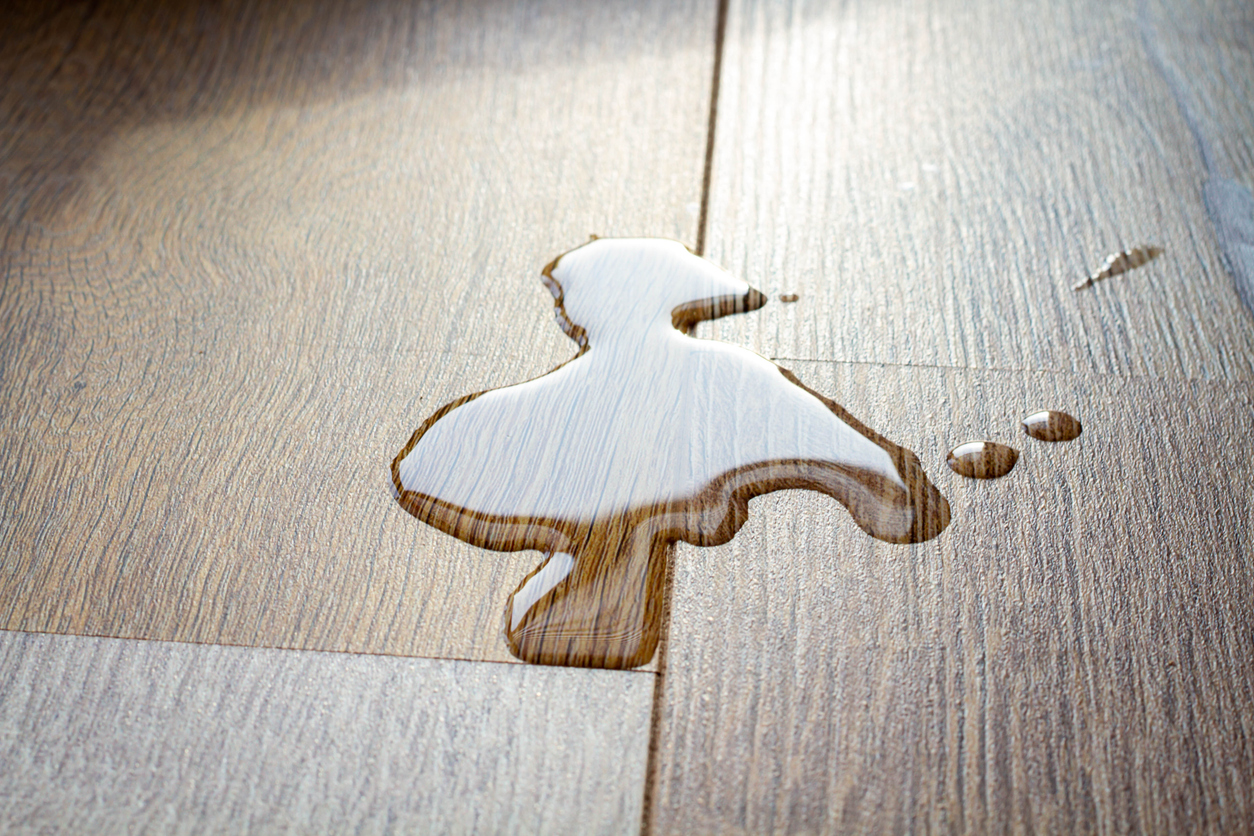Laminate flooring is arguably the most popular type of flooring for homes. Why? It’s resilient, low-maintenance, easy to install, and happily affordable. A hardwearing finish makes it long-lasting, and – to put it simply – laminate flooring looks very nice for not a lot of effort.
In this article, we’ll explain exactly what sets laminate flooring apart from other types, why it’s so popular in the home, and the benefits of laminate flooring over other types of floors.
Types of Wood Flooring (Real & Faux Wood)

The main types of real and faux wood flooring include:
- Laminate: Made from fibreboard, with (what’s essentially) a photographic image of real wood built into the top layer. This makes it look like real wood and keeps its price down.
- Hardwood flooring: Made from real, solid wood (like white oak, maple, or hickory), hardwood is strong and lasts the longest, but it’s expensive and requires a good maintenance routine.
- Engineered wood: The top layer is made from solid wood (known as a veneer), and the core is made from plywood. This makes it better at handling water and humidity compared to hardwood.
- Luxury vinyl: Available in wood-look or tile-look, luxury vinyl is made from PVC. This makes it water-resistant, strong, and affordable. It’s the only faux wood floor that’s easier to lay than laminate.
- Tiles: Wood-look tiles are made from porcelain or ceramic, but have a fabricated surface that’s made to mimic wood. These can be high-priced and don’t feel as warm underfoot as wood/faux wood.
Why is Laminate Flooring So Popular?
As one of the most popular types of flooring of this century, laminate flooring is a top choice for good reason.
Benefits of laminate flooring include:
- Cheap: Laminate flooring is very affordable, making it a great option for large rooms (like living rooms and dining areas) and small spaces in the home (like hallways, cupboards, or utility rooms).
- Easy to DIY: It’s one of the easiest floors to install yourself, even if you don’t have much DIY experience. It’s also cheap to hire an installer.
- Looks nice: Despite its low price, laminate is considered a very nice floor. It looks like wood, but it’s got a shine and smoothness to it that you don’t get from solid wood floors.
- Long-lasting: Laminate lasts for many, many years, making it excellent value for money. Waterproof laminate can last even longer.
- Low-maintenance: There isn’t much to do to maintain laminate floors. Once laid, you simply hoover and clean it. There’s no need to stain or sand it regularly (like with hardwood).
Overview: Laminate vs Other Flooring
For a quick comparison of laminate vs other types of flooring (including hardwood, engineered wood, luxury vinyl, and tiles), see our table below:
|
Item |
Laminate | Hardwood | Engineered wood | Luxury Vinyl | Tiles |
|
Cost |
Cheap |
Expensive |
Expensive |
Cheap |
Moderate-Expensive |
|
Lifespan |
15-25 years |
100 years |
25-30 years |
10-25 years |
15-50 years |
|
Maintenance |
Low |
High |
Medium |
Low |
Medium |
|
Water-Resistance |
Good (water-resistant laminate only) |
OK |
Good |
Good |
Excellent |
|
Installation |
Easy |
Difficult |
Difficult |
Easy |
Difficult |
|
Comfort |
Warm, Soft |
Warm, Soft, Cushioned |
Warm, Soft, Cushioned |
Warm, Soft, Cushioned |
Cold, Hard |
Comparing Laminate vs Other Types of Flooring
For a more detailed comparison of how laminate compares to other types of floors, read our evaluation below.
Laminate vs. Hardwood
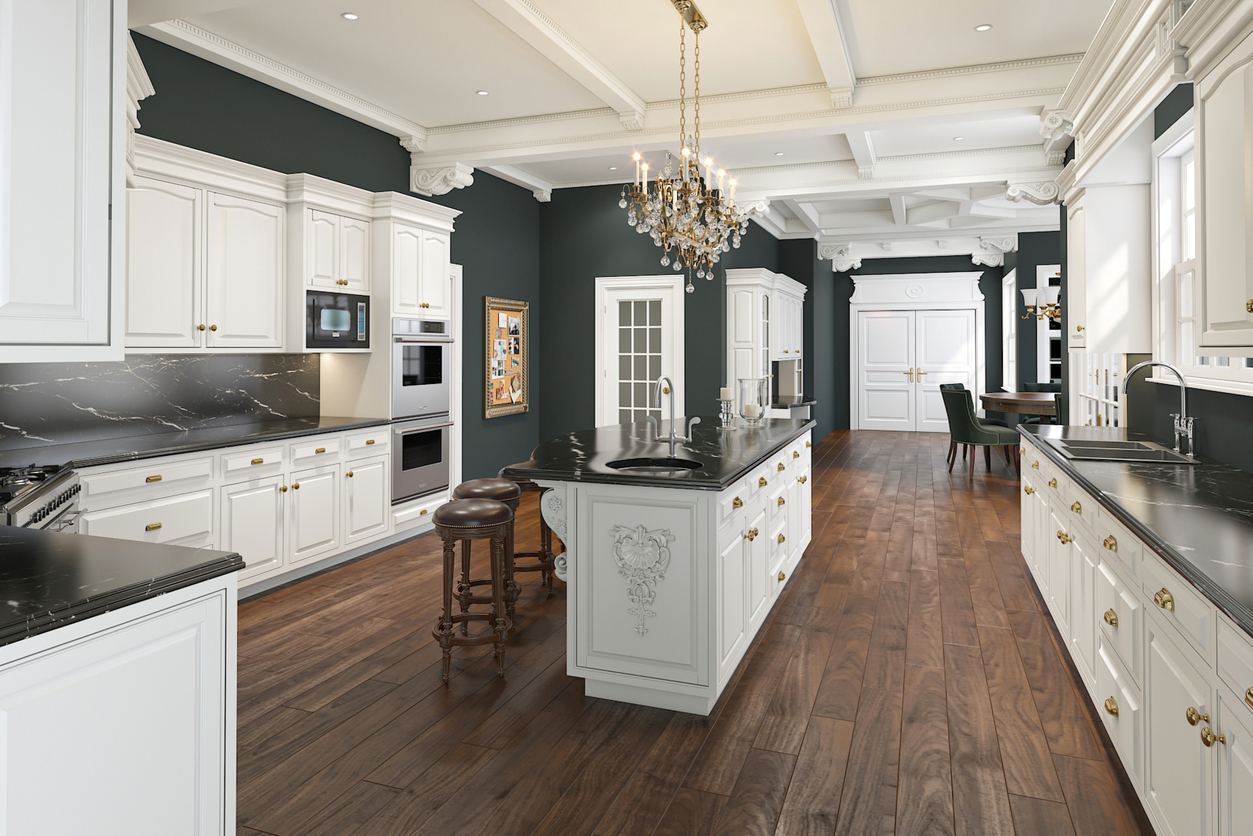
When it comes to laminate vs hardwood, laminate is cheaper, easier to install, and easier to maintain compared to hardwood. But hardwood is easier to repair, lasts longer, and stands out for its natural beauty.
Appearance & Feel
Who wins? Hardwood feels and looks better.
Laminate flooring uses a printed image layer to imitate wood. Its surface is durable, but it doesn’t have a real wood grain. Hardwood planks are made from genuine wood, with a natural grain and the warmth of solid wood.
Cost
Who wins? Laminate is cheaper.
Laminate costs less per square foot to buy and install. Hardwood is more expensive to buy and – since it requires a specialist to install – installation costs are higher. You need to refinish hardwood over the years to prolong its natural beauty, which adds to the expense.
Durability & Maintenance
Who wins? Both are durable, but laminate is easier to maintain.
Laminate resists scratches and dents. Water resistance depends on the product, so choose water-resistant laminate flooring for kitchens or bathrooms. Hardwood is prone to scratches and water damage. It needs careful cleaning and periodic resealing to protect its surface.
Installation
Who wins? Laminate is easier and cheaper to install.
Laminate is fitted via a click‑lock floating installation over an underlay. It’s quick to install and you can do it as a DIY job with the right installation equipment. Hardwood is nailed or glued down, and it should be done by a skilled installer to get it right and prevent issues or wastage.
Lifespan
Who wins? Hardwood lasts longer with proper care.
Good quality laminate can last around 15 to 25 years, depending on the wear layer and how well it’s cared for. Hardwood, if well-maintained, can last 30+ years – even up to 100 years. However, it’s more sensitive to moisture and heavy wear, and it needs special care to prolong its lifespan.
Laminate vs. Luxury Vinyl Tiles/Planks (LVT/LVP)

Luxury vinyl flooring is another modern choice, and it’s cheap and durable just like laminate. Yet there are some important differences. Luxury vinyl can be 100% waterproof (rather than just water-resistant) and it has a grained surface like hardwood. It’s also softer to walk on, and – depending on the type of luxury vinyl – it can offer better soundproofing.
Read more about the benefits of luxury vinyl flooring.
Water Resistance
Who wins? Luxury vinyl is more water-resistant.
Many laminate flooring types are water-resistant, but not fully waterproof. This means they can withstand spillages, but you should clean spills quickly to prevent water from seeping into the core. Luxury vinyl is usually 100% waterproof, so it performs better in wet areas (like bathrooms).
Comfort & Underfoot Feel
Who wins? Luxury vinyl can feel more cushioned.
Laminate feels firmer underfoot, but adding high-quality underlay helps it feel softer and less echoey. Luxury vinyl typically feels softer and more moulded to your feet, especially rigid-core vinyl.
Appearance
Who wins? Both are attractive, but have different features.
Laminate flooring offers high‑definition print that intimate wood or stone, but the surface is completely smooth. Luxury vinyl, on the other hand, has a textured surface. This is designed to mimic a natural wood grain or the stone patterns found in tiles.
Installation & Repairs
Who wins? Both are very easy to install and repair.
Both laminate and vinyl use click‑lock methods. This makes them easy to install (even if you DIY) and means you can swap damaged planks with little effort. Luxury vinyl is slightly easier to cut, however, as you can often score the planks with a Stanley knife instead of a saw.
Laminate vs. Engineered Wood
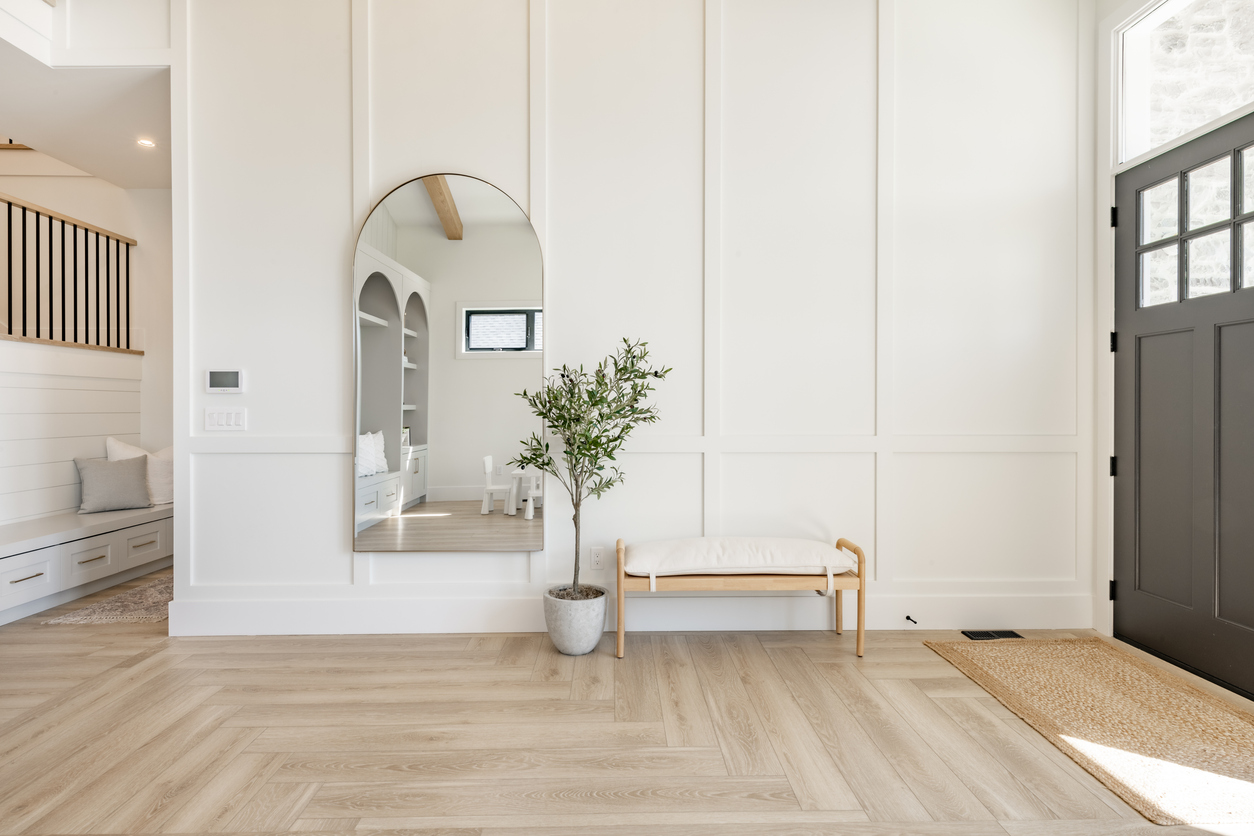
Engineered wood is one of the most resilient types of flooring. It’s stronger and more water-resistant compared to laminate. It also has a real wood veneer (top layer), which means it looks and feels natural. Yet it’s more expensive compared to laminate, and it’s worth investing in professional installation to ensure it’s nailed/glued correctly.
Read more about how to choose the best engineered wood flooring.
Surface Material
Who wins? Engineered wood looks more natural.
Laminate has a high‑definition image layer over a composite core. This mimics the appearance of real wood, but it doesn’t look exactly the same. Engineered wood uses a real wood veneer over plywood or hardboard. This gives it a natural look, feel, and surface grain that’s hard to beat.
Authenticity & Refinishing
Who wins? Engineered wood is more authentic and can be refinished.
You cannot sand or refinish laminate once its top layer wears. It takes a long time for this to happen – many years – and you can prevent it by not wearing shoes on laminate, hoovering regularly (to minimise stones), and using furniture pads. Whereas engineered wood has a thicker veneer, which usually means it can be refinished a few times.
Cost
Who wins? Laminate flooring is cheaper than engineered wood.
Laminate flooring is cheaper to buy and install than engineered wood. You can install it yourself or pay a reasonable amount for installation. Engineered wood is more expensive (thanks to its solid wood top layer), and it benefits from expert installation from a skilled professional.
Moisture Tolerance
Who wins? Engineered wood is more waterproof.
You can get water‑resistant laminate, but no laminate will be fully waterproof. It can handle moisture and spillages, but not for long periods. It may also struggle to withstand very large spillages (like a washing machine flooding). Engineered wood is more stable and can handle prolonged moisture better than laminate.
Laminate vs. Tile (Porcelain/Ceramic)
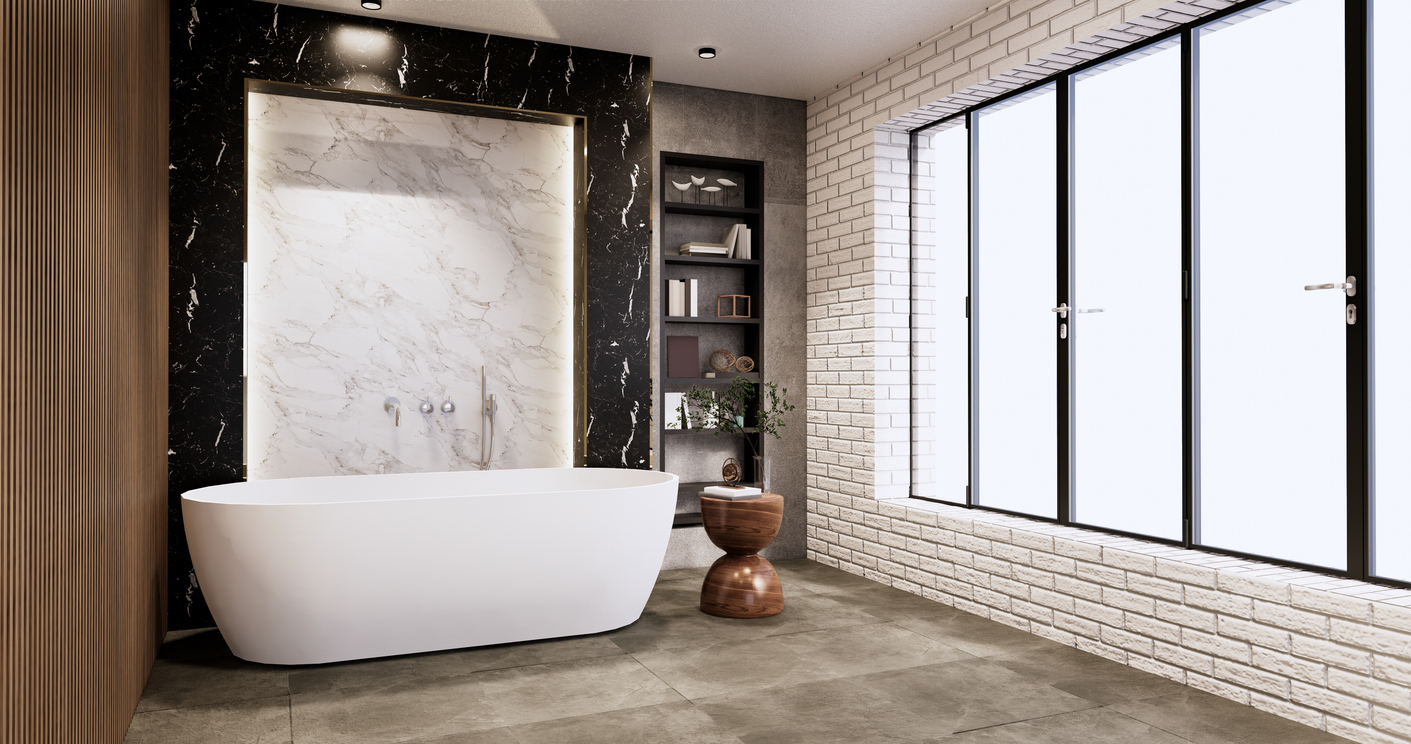
Laminate and tile are two very different materials, and they offer a very different aesthetic. Wood-look tiles can look similar to laminate, and tile-look laminate can look similar to real tiles. Generally, tiles cost more and are difficult to install as a DIY. They’re also very durable and waterproof.
Water & Stain Resistance
Who wins? Tiles are more waterproof, but aren’t fully stainproof.
Tiles are naturally waterproof and stain‑resistant. However, grout lines need routine sealing and cleaning to avoid stains or breakages. Water-resistant laminate, especially our tile-effect laminate flooring, can withstand water for 24 to 48 hours. It’s also resistant to stains and doesn’t have grout.
Durability
Who wins? Tiles last longer, but both are durable options.
Tiles are very hard-wearing. It’s hard to scratch tiles, but dropping heavy items can crack tiles. Laminate resists scratches well and is difficult to crack, but it may not last as long as a tiled floor.
Comfort & Warmth
Who wins? Laminate is warmer and more comfortable underfoot.
Tiles feel cooler underfoot, which can be uncomfortable without underfloor heating. They’re also very firm to walk on. Whereas laminate flooring is warmer and softer underfoot, especially when paired with a good underlay.
Style Options
Who wins? Both – it depends on your preference.
Tiles come in different colours, styles, and shapes. You can get squares, rectangles, mosaics, or geometric shapes. These come in shiny, matte, or non-slip effects.
Laminate also offers different styles and laying patterns. You can get wood-look laminate (the classic choice), high-gloss laminate, tile-effect laminate, marble-effect laminate, and herringbone laminate.
Final Thoughts: Shop Wood Floors Today
Laminate flooring is an excellent choice of floor, but so is hardwood, engineered wood, luxury vinyl, and tiles.
What sets laminate apart is its affordability paired with its longevity, which is what makes it the most popular flooring for homes.
Shop laminate floors in Manchester today, or explore our most popular styles (including herringbone, tile-effect, marble-effect, and high-gloss).
FAQs
How do I fit a laminate floor?
You can install laminate yourself or hire a professional installer in Manchester. Read our guide on how to install laminate flooring.
Do I need an underlay for laminate flooring?
Yes, you should install an underlay with laminate floors. Underlay helps reduce noise, gives a smoother feel underfoot, and protects the laminate from moisture coming up through the subfloor. Without it, it can crack, creak, and produce echoes when walking.
What is the average cost of installing a laminate floor?
The typical cost to install laminate flooring ranges from £400 to £1,200 per room, with fitting prices around £20 to £30 per square metre. We offer free quotes to provide the exact price for your project. Get a quote today.
Can laminate flooring be used in kitchens and bathrooms?
Yes, some laminate flooring has water resistance and 48-hour protection, making it suitable for kitchens and bathrooms with proper care. Small spillages should be cleaned up as quickly as possible. For large spillages, consider using a dehumidifier to fully dry the floors.
Read more on installing laminate in kitchens and bathrooms.
Do you offer a free measurement and consultation service?
Yes, we provide a free home measurement and consultation to help you choose the right laminate flooring and ensure a perfect fit before ordering. Book a free home measurement with Floor Express Manchester now.
Do you remove old flooring before fitting laminate?
Yes, Floor Express will remove your old flooring as part of the laminate installation service, ensuring the space is fully prepared for the new floor.


